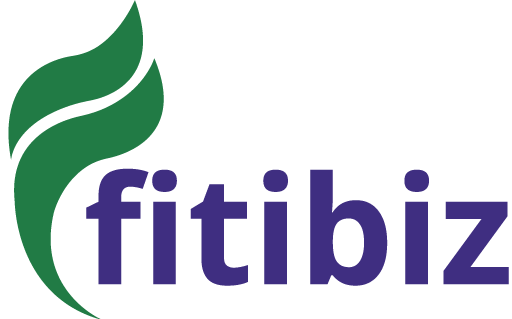Lower Back Pain: Symptoms, Diagnosis, And Treatment
Introduction of Lower Back Pain
It can be said that pain is an unpleasant feeling when you can’t behave comfortably or an unpleasant body sensation that makes your body uncomfortable. And when it comes to lower back pain, it becomes the worst problem for anyone as lower back pain is a most painful, uncomfortable, unpleasant condition that badly affects the lower part of the spine.
There may be different reasons for Lower back pain, it can be caused by an injury to a muscle or ligament and any damage to the soft tissue of muscle.
If you have ever had lower back pain stop you from doing what you want, you are not alone. Lower back pain problem is the most basic medical problem in this world. This is a leading reason why people visit a doctor, affecting more than 80% of adults at some point in their lives.
According to an important study that was published in some of the medical journals, your lower back pain is also a leading cause of disability. You may not fully capable to prevent your lower back pain, especially as you age and your back loses some strength and resilience. Certainly, there are some ways for you to get relief from it, no matter what is the cause of your back pain.
What Is the Lower Back Pain Problem?
Well, the lower back is recognized as the lumbar region of your spine. This region of your body has the capabilities to do some heavy lifting. In addition, the lumbar spine of your body carries the weight of your entire upper body. Also, the biomechanical stresses that occur with movement.
The lumbar spine has five vertebrae backbones. Each vertebra has a large disc cushiony gel wrapped in a tough membrane on its front side that acts as a shock absorber. Each and every vertebra also has two cartilage-lined facet joints on the backside of it. When discs and facet joints working together, then they allow the spine to safely bend and twist.
Your lower back also has ligaments, tendons, and muscles. Ligaments are the strong bands that can hold the vertebrae and discs together. Tendons attach muscles to the vertebrae. Thus these structures can help you to limit the excessive movement which could harm the spinal cord.
How Long Does Lower Back Pain Last?
Lower back pain can be classified into three parts such as acute, subacute, and chronic. However, the acute episodes of lower back pain normally last from some days to four weeks. Subacute lower back pain lasts between four to weeks.
Although, as per the National Institutes of Health, likely to 20 percent of people who suffer from acute back pain can develop chronic back pain defined as pain that lasts 12 weeks or longer. Even in such cases, there are several different treatment options available to help you relieve lower back pain symptoms. When your lower back pain is really hurting you, Then you might worry something is seriously wrong.
A similar situation goes for back pain which seems unending. The good news is that while back pain is a major inconvenience, it is rarely an urgent medical issue. In reality, most of the time you do not have to treat this problem. Back pain usually resolves on its own unless you have a major underlying issue.
Type of Lower Back Pain
Lower back pain is a disorder of muscles that lead a discomfort to a person. People generally face 3 types of lower back pain.
1)Non-Specific back pain
Generally, it is caused by twisting, stretching, lifting or by any unexpected or sudden movement. But there may be many other reasons too for the cause of non-specific back pain. Mostly, the people face this pain in the lower back, but in the savior condition it may spread to thighs and buttocks also. The non-specific pain can be improved quickly as compared to other lower back pain.
2) Specific back pain
Tumors, inflammatory conditions like infections, spondyloarthritis, etc problems are the cause of specific back pain. Like Non-specific problems, they can’t be improved quickly.
3) Referred back pain
Problems from internal organs such as kidney stones, gallbladder disease, kidney infections, aortic aneurysm, etc may lead to the problem of referred back pain.
Cause of Lower Back Pain
There are many reasons for the cause of lower back pain. It can be because of heavy lifting, sudden movement, fall, etc. Most commonly, the cause of lower back pain is the injuries of soft-tissues or the mechanical issues. The lower back injuries can damage the compression of nerve roots, spinal joints, intervertebral discs. The common causes of your lower back pain are sometimes observed as being mechanical, organic, or idiopathic.
Sometimes the conditions of your spinal are congenital which means it exists from birth. And acquired meaning this disorder develops later in your life. Mechanical lower back pain is often triggered by spinal movement and involves spinal structures, such as the facet joints, intervertebral discs, vertebral bodies (vertebrae), ligaments, muscles, or soft tissues.
Organic lower back pain is attributed to diseases, such as spinal cancer. Idiopathic refers to an unknown cause. These are a few things that your doctor may look for or rule out when you schedule a visit to your doctor for lower back pain. Some Common Lower Back Pain Causes and Commonly back pained conditions are as follows:
Sprains and strains:
The most common causes of lower back pain are known as ligament sprains and muscle or tendon strains. They are often related to overuse.
Degenerative disc disease:
Well, this name may sound worrisome to you, but it just means you have a damaged disc which causing pain. Over time, discs become thinner and flatter due to wear and tear. Thus it leaves them unable to cushion the vertebrae and more likely to tear.
Herniated disc:
The protective covering that is present on intervertebral discs can tear over time. When it occurs, the soft inner disc tissue can push into the outer layer. A disc that slips out or bulges of the place is known as the herniated disc, slipped, or disc bulging disc. The herniation can press on nerve roots, leading to the symptoms such as tingling, pain, numbness, or weakness in the area that the nerve serves.
Sciatica:
Pain that results from an irritated or pinched sciatic nerve. This nerve runs down your lower back through your hips and buttocks and down each leg. Sciatica is known as how the laypeople refer to pain which travels down the leg from the lower back, although your doctor may use the term lumbar radiculopathy.
Spondylolisthesis:
A vertebra slides forward out of position, disrupting your spine’s alignment, and sometimes compressing nerve roots. It is most common in the lumbar region but can happen anywhere along the spine. This slippage is often caused by either disc degeneration or a fractured vertebra or spondylolysis.
Spinal stenosis:
When the inside spaces of your spine become narrowing, Then most often from a herniated disc but sometimes from bone spurs caused by spinal osteoarthritis. This can result in some painful pressure on the spinal nerves. The problem of Spinal stenosis may occur in both the parts, such as the upper (cervical) spine and the lumbar spine, but lumbar spinal stenosis is more common.
Skeleton irregularities:
A state in which the spinal curves to the side scoliosis can also lead to back pain.
Ligament strain/ muscle:
Poor physical postures, constant strain on the back, heavy lifting or a sudden awkward movement can strain back muscles.
Arthritis:
Arthritis is joint inflammation. There is two arthritis that is osteoarthritis and rheumatoid. Osteoarthritis can affect the lower back of the body. It is also known as degenerative joint disease and may occur with aging. Around the spinal cord, arthritis can lead to a narrowing of the space in the spine. It is also known as spinal stenosis.
There are more than 100 types of arthritis, many of which can cause lower back pain. The most common types include osteoarthritis (the most common by far; in the back, it’s known as spondylosis), rheumatoid arthritis, and ankylosing spondylitis.
Cauda equina syndrome (CES):
Compression of the bundle of nerves that forms below the spinal cord in the lumbar spine. It is a rare but serious disorder that requires immediate medical attention and possibly emergency surgery. CES got its name from the fact that the fanned-out bundle of nerves resembles the base of a horse’s tail.
Discitis or osteomyelitis:
Both infections of discs (discitis) and bone (osteomyelitis) can cause severe pain and require prompt medical attention.
Osteoporosis:
Your bones lose mass faster than it can be replaced, making them brittle. They can even fracture with little or no warning. These fractures are especially common in the spine, where they’re called vertebral compression fractures. Both men and women lose bone mass as they age, but postmenopausal women lose it much faster and so are more at risk for osteoporosis.
Spinal tumors:
When cells divide and multiply unchecked, the result is a tumor. Both benign and malignant tumors can cause lower back pain. They can either originate in the spine or metastasize there, meaning they’ve spread from somewhere else in the body.
Ruptured discs or slipped discs:
The discs are not as flexible as you age. It works as the cushion between the bones in the spinal cord. The soft part of the discs can be ruptured.
How To Prevent Your Back From Pain?
Any age group can face the problem of lower back pain. Because the pain never asks you the age it can be because of heavy lifting or any movement. At the right time with some good practices, you can get relief from the pain.
1) Yoga:
Yoga will always help to come out of many health problems. It is a mind-body therapy that is recommended by the doctors to treat back problems. You can gain more awareness of your body by practicing yoga every day.
Some Yoga pose that will help to overcome back pain are:
- Child’s pose
- Downward Facing Dog
- Sphinx pose
- Standing Forward Bend
- Knees to Chest with Slow Rock
- Reclined Pigeon Pose
- Reclined Supine Twist
2) Exercise:
Regular exercise or aerobic activities boosts your body and increases the strength and endurance of the back. Regular exercise helps the muscles to grow and function better. Exercise improves the blood circulation which makes the body function better.
3) Healthy weight:
It is important to gain healthy weight as obesity or being overweight strains back muscles. So you should have the weight according to the age and height.
4) Correct body movement:
You should always be incorrect body movement to avoid pain. Always keep a few things to avoid pain:
- Avoid such movements that can twist or strain the back.
- You should avoid standing for a long period of time.
- Use a seat with lower back support to avoid back pain.
- Body position should be frequently changed every half an hour.
- Avoid heavy weight lifting
- Avoid twisting
- Always keep you back straight
Risk Factors of Lower Back Pain
1) Lack of exercise:
Lack of exercise makes your muscles weak and might lead to back pain.
2) Excess of weight:
Excess weight strains the back muscles and puts extra stress on the back of the body.
3) Diseases:
There are some diseases( cancer and Osteoarthritis) that may cause the problem of lower back pain.
4) Smoking:
Smoking is responsible for reducing the flow of blood to the lower spine and leads to the problem of back pain.
5) Psychological condition:
The people facing the problem of anxiety and depression have higher risk of back pain.
6) Improper heavy weight lifting:
Instead of using your back to lift the weight, always lift weight using your legs, otherwise, you may face the problem of back pain.
7) Improper body posture:
To keep the body away from back pain, it is always important to have a good body posture.
Diagnosis of Lower Back Pain
Identifying the cause of the pain is obtaining an accurate diagnosis. The doctor takes the general idea of the pain from the given information of the patient.
The doctor will check on three stages.
1) The patient history:
In this process, the doctor will take a detailed description of symptoms from the patient. The patient also provides complete medical history. The doctor will collect the information such as sleep hours, Recent injury of the patient, Sleep position, Activity level of the patient,
Uncomfortable postures of the patient.
2) Patient’s physical test
In the physical test of the patient, the doctor will check the activities such as palpation (To check by hands), the reflex test, leg raise test, motion range test, neurologic test.
3) Diagnosis of Imaging test
This test is conducted to gain the more and exact cause of the pain. This test is mainly conducted when the patient’s pain is severe. During the Imaging test the doctor asks the patient to go for the test of X-ray (to show the alignment of the bones), MRI or CT scan (show problems of discs, bones, muscles, etc), bone scan (to check bone tumors, fractures caused by osteoporosis), nerve studies, blood test.
Treatment For Lower Back Pain
Pain is a complex and unpleasant state. But it is possible to overcome the problem of back pain With the help of proper treatment , exercise, medication and chiropractic care. Doctors suggest different types of treatment to the patients based on the type of pain.
Some Less Invasive or Noninvasive Back Pain Treatments can be done. Your doctor has a wide range of treatments that may help your lower back pain. In general, expect your doctor to take a stepped care approach. That means starting with simple, low-cost treatments and moving to more aggressive approaches later. Keep in mind that many treatments take time to reach their full effect.
1) Medications
When over-the-counter pills and topicals don’t do enough to relieve back pain, your doctor may recommend a prescription drug. Antiseizure medication, such as gabapentin or pregabalin, for nerve-related pain. Muscle relaxants, such as baclofen or carisoprodol.
Prescription NSAIDs, such as celecoxib, diclofenac, or fenoprofen. Opioids, such as oxycodone or hydrocodone, on a short-term basis. For a variety of reasons, opioids aren’t good long-term options for lower back pain. Examples include:
- Injections
- Topical pain relievers
- Muscles relaxants
- OTC pain relievers
2) Exercise
Regular exercise will improve blood circulation and will help to get relief from the pain.
3) Yoga
Yoga helps to come out from the lower back pain and stress.
4) Physical therapy
Doctors suggest going for physical therapy to improve flexibility and to strengthen the back of the body. Regular therapy helps you to get relief from pain.
PT for lower back pain involves passive and active therapies to help the patient build core muscle strength, improve spinal flexibility and range of motion, correct posture, and more. Your physical therapy sessions may include:
- Exercise
- Ice/heat
- Massage
- Transcutaneous electrical nerve stimulation (TENS)
- Ultrasound
5) Surgery
Sometimes doctors suggest their patients go for surgery.
6) Injections
An epidural steroid injection or a selective nerve block may provide short-term pain relief when lower back pain causes sciatica symptoms, such as leg pain.
Home Remedies For Lower Back Pain
Unless you have had a major injury, such as a fall or car accident, you probably do not need to rush to the doctor for back pain. You may want to try these simple self-care strategies first.
Avoid bed rest:
When lower back pain strikes, people often think complete rest will relieve back pain. However, a review of many clinical studies found that patients who retreated to bed actually experienced more pain and recovered more slowly than patients who stayed fairly active
Use ice and/or heat:
Many people find that using ice or cold packs for periods of up to 20 minutes at a time helps reduce pain and swelling. Always wrap ice or a cold pack in a thin towel before putting it on your body so you don’t injure your skin. You may also find that heat, such as a heating pad or warm bath, eases pain. Ice is recommended in the first 48 hours after injury; then you can try a combo of ice and heat.
Try over-the-counter (OTC) remedies:
Short-term use of OTC pain relievers, such as the nonsteroidal anti-inflammatory drugs (NSAIDs) ibuprofen and naproxen, may ease your lower back pain. Also consider OTC creams, gels, patches, or sprays applied to the skin. They stimulate the nerves in the skin to provide feelings of warmth or cold in order to dull the sensation of pain.
Some Alternative Treatments for Lower Back Pain
If you want to know What Are Some Complementary, Alternative, and Emerging Treatments for Lower Back Pain? then continue reading. In some cases, doctors suggest therapies that are not considered “standard of care.” They probably won’t be covered by insurance, but they may be worth considering. Examples include:
Platelet-rich plasma (PRP):
PRP treatments use a small sample of your own blood that has concentrated amounts of blood building blocks known as platelets. Your doctor then injects the PRP directly into a damaged disc. The theory is that PRP injections use your own healing system to accelerate the improvement of injured tendons, ligaments, muscles, and joints.
PRP treatment has a long track record in knee osteoarthritis, but a recent review article in the Journal of Spine Surgery suggests it may have a useful role for back pain, too. PRP needs a lot more research before it can be considered a proven technique.
Stem cells:
In this emerging treatment, your doctor injects stem cells harvested from your hip into the intervertebral disc or discs causing your pain. Doing so may lessen pain and the degenerative effects of aging, though, like PRP, more research is needed before stem cells for lower back pain could eventually become the standard of care.
Acupuncture:
Your doctor probably doesn’t perform acupuncture (some do), but may support you trying it as a complementary therapy. Acupuncture involves the careful insertion of fine, sterile needles into specific points on your body. This may stimulate the release of your natural pain-killing chemicals.
Chiropractic care:
More than 50 percent of people with acute lower back pain see a chiropractor, a healthcare provider who specializes in spinal manipulation. Look for one that uses evidence-based techniques.
Some Useful Tips To Prevent Lower Back Pain
While you can not stop aging or change your genetic makeup, lifestyle changes can help manage and prevent lower back pain. Having a healthy lifestyle may make you less likely to suffer an accidental injury, too.
Improve your physical fitness:
People who are not physically fit are more likely to develop lower back pain because strong core muscles help support the lower back.
Stay active:
People who lead sedentary lives may be more likely to injure themselves when they do exert themselves. As far as back health is concerned, it’s better to do a smaller amount of physical activity most days of the week than to sit all week and over-exert yourself on the weekends.
Lose weight if necessary:
The more you weigh, the more pressure you have on your lumbar vertebrae. Being overweight or obese can put stress on the back and lead to lower back pain.
Lift heavy objects the right way:
Be sure to squat while lifting so that your hips and knees do much of the work. Keep the load close to your chest while you lift.




Write a comment
Your email address will not be published. All fields are required